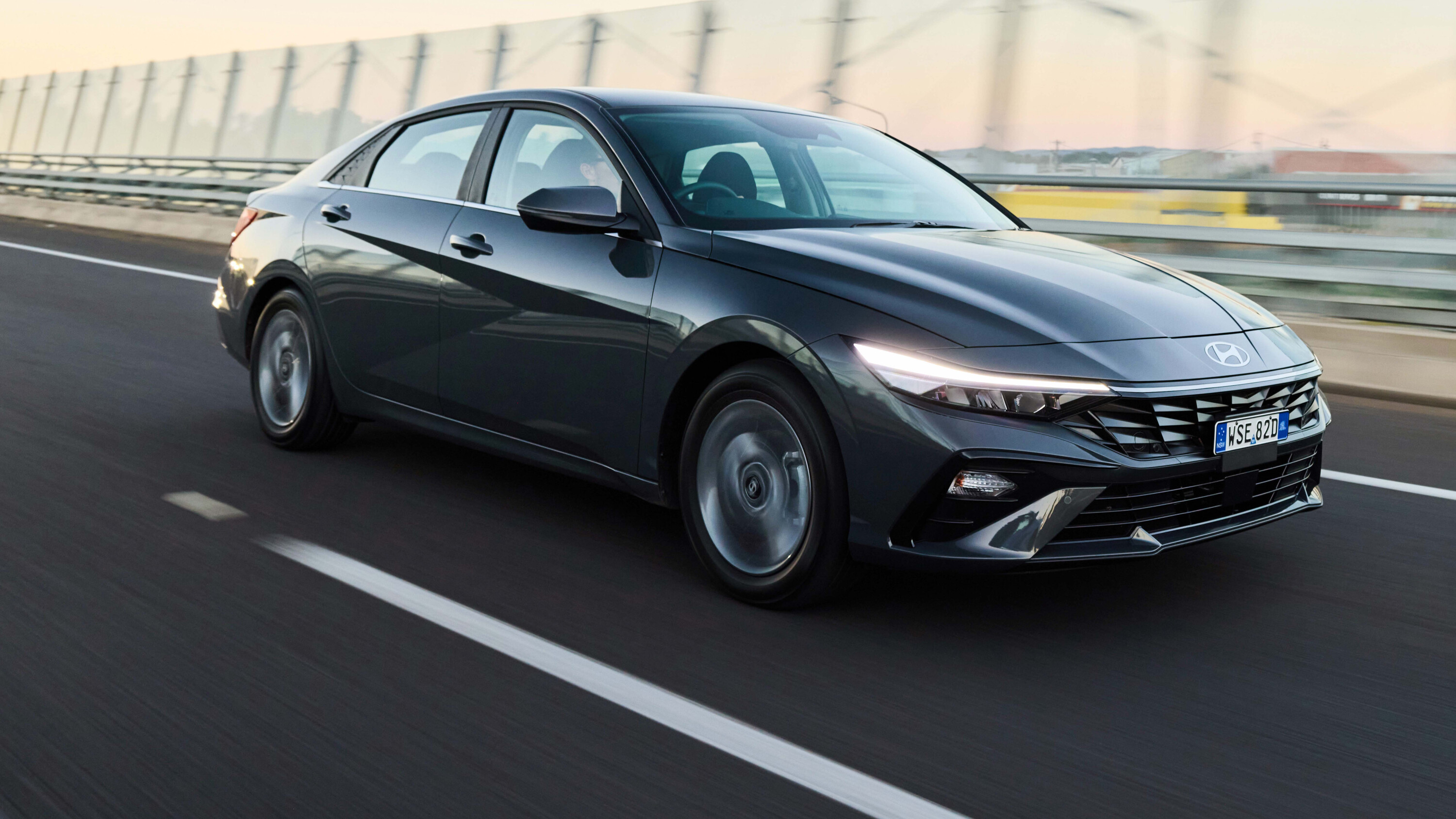Score breakdown
Things we like
- Impressive dynamics
- Torquey and efficient hybrid drivetrain
- Generous space
- Strong value
Not so much
- Dowdy styling of base model
- Inadequate door storage
- Austere cabin appearance and feel
- Sparsely trimmed boot
Small-car sales might be on the decline, with small sedans an even smaller slice of that shrinking wedge, but Hyundai is maintaining its product offensive by facelifting the i30 sedan range for 2024.
Just over three years since the original lobbed here – replacing the Elantra nameplate with ‘i30 Sedan’ solely for Australia – a mid-life facelift has arrived, incorporating many of the engineering enhancements of the new-generation Kona, as well as an extensive restyle, new drivetrains and a line-up reshuffle.
The timing couldn’t be more perfect as the existing i30 hatch – which accounts for 84 per cent of total (non-N) i30 sales in Australia – is currently in runout as it transitions from Korean production (which finished in December) to being sourced from the Czech Republic.
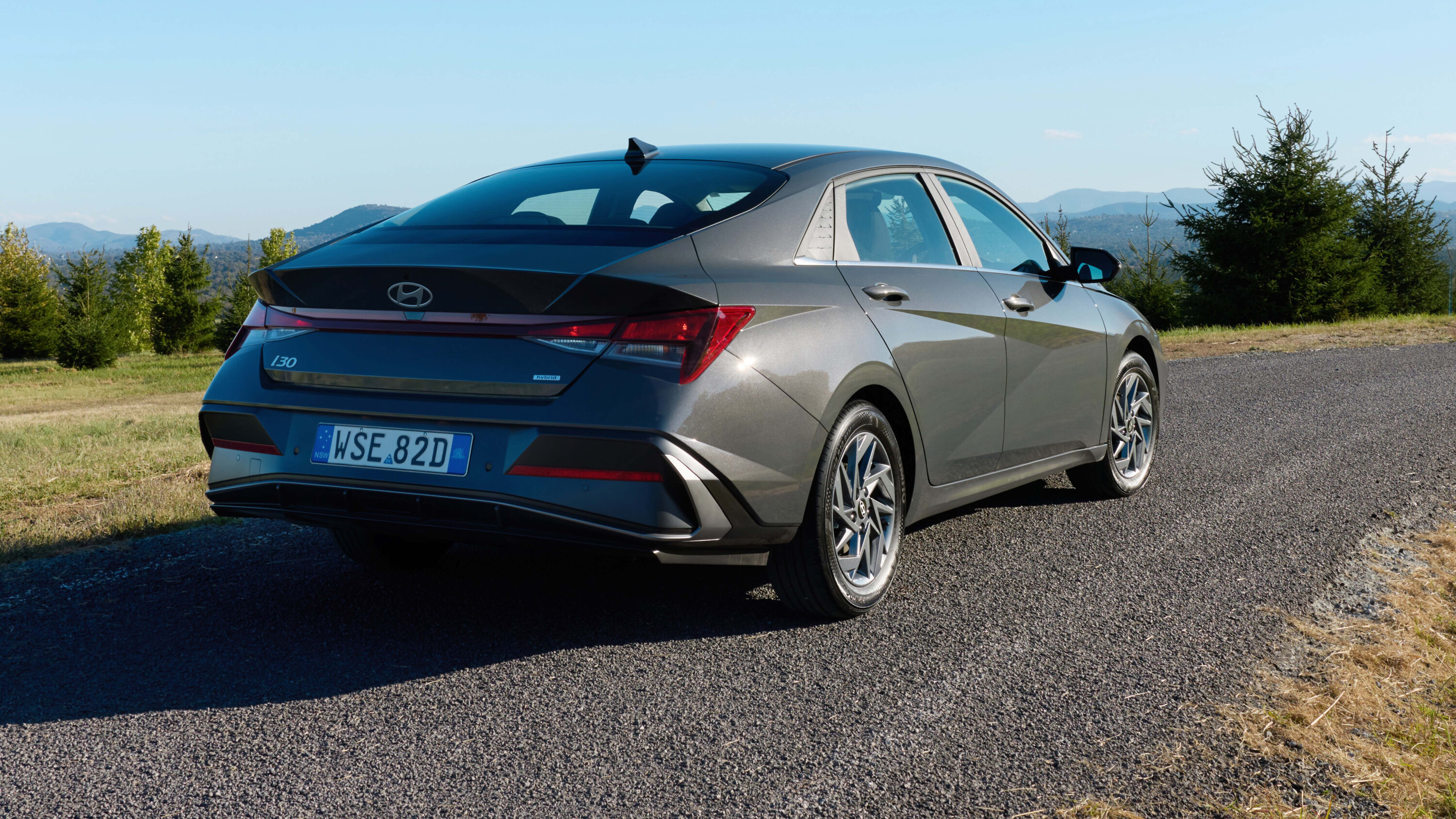
Refreshed hatch models – featuring more efficient, more sophisticated drivetrains, and likely price increases – won’t come on stream until around mid-year, which gives the 2024 i30 sedan several months of clear air to assert itself.
Not every variant will be available from launch, however. The standard 2.0-litre i30 sedan range – running the same 110kW/180Nm 2.0-litre ‘Atkinson cycle’ petrol four-cylinder as the new base Kona, with an impressively re-engineered automatic continuously variable transmission (CVT) replacing the previous six-speed auto – is already on sale in three variants (base, Elite and Premium).
The newly introduced hybrid is currently only available in base i30 sedan form – the Elite and Premium hybrids are some months away, with pricing still to be announced. And while the 1.6-litre turbo-petrol i30 sedan N-Line has had its pricing revealed, supply is essentially still on the boat.
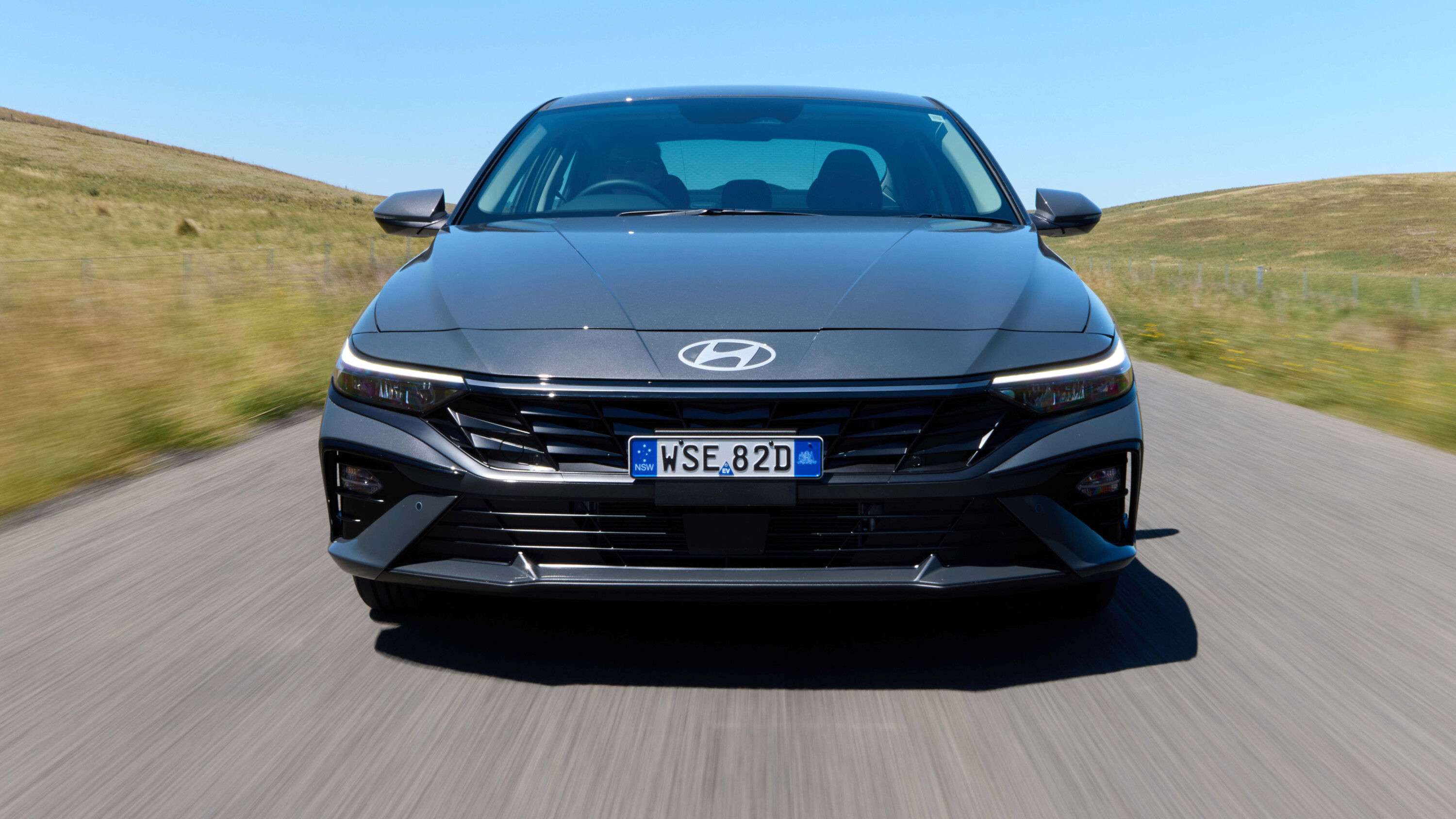
Visually, the new i30 sedan is pretty easy to spot, and not just because its styling is significantly altered.
Its ‘Parametric Dynamics’ design language features striking sheetmetal creases – further enhanced by the 2024 model’s new horizontal front-end treatment – and its fastback-like silhouette stretches to a 4710mm length, making this ‘small’ sedan essentially medium-sized.
There’s no mistaking its sharp new LED headlights with matching daytime running lights, parametric-patterned grille and more aggressive lower section with air curtains at each side, as well as Hyundai’s new flush bonnet logo.
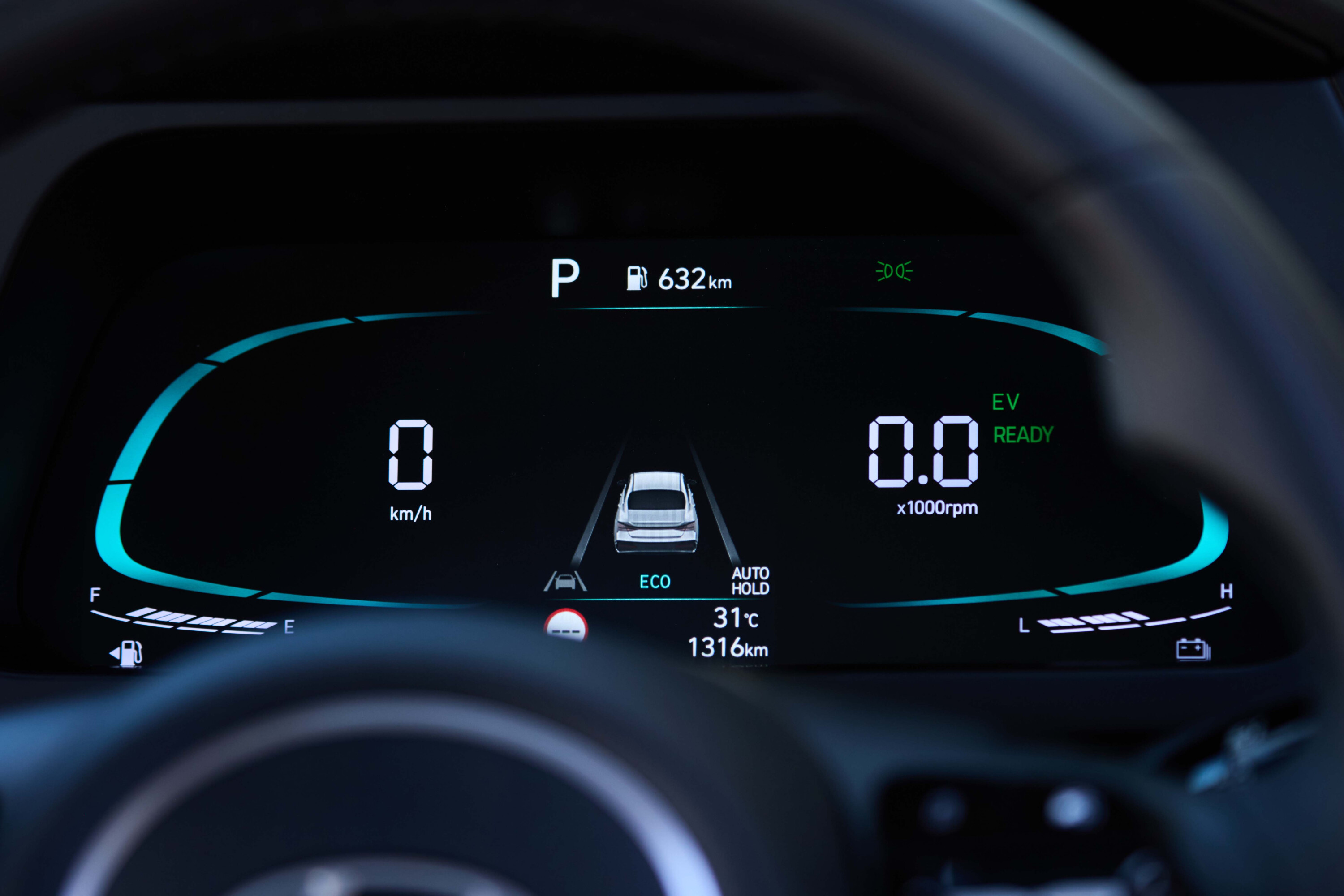
From side-on, there’s a new parametric-patterned garnish in the C pillar and new alloy wheel designs (grey 16-inch for the base sedan, bladed machine-faced 17s for Elite and Premium). And at the rear, a broader lower diffuser with silver highlights.
It’s all quite interesting, and definitely not bland, but the base version reeks of rental car austerity, and even the Elite and Premium still look rather ‘American’.
Thankfully, the N-Line is a completely different ball game, with a genuinely sporty and tough appearance that’s incredibly close to the actual N model in its blacked-out aggression and muscular stance. Wearing meshed 18-inch wheels and deeper front and rear bumpers, it’s the yang to the regular i30 sedan’s yin.

JUMP AHEAD
- How much is it, and what do you get?
- Interior comfort, space and storage
- What is it like to drive?
- VERDICT
- Specifications
How much is it, and what do you get?
The new i30 sedan hybrid is $4000 more than the base 2.0-litre CVT petrol ($29,000 before on-road costs), though that brings more than just the new efficiency-focused drivetrain.
In place of the 2.0-litre’s torsion beam rear axle is a multi-link independent set-up, as per the turbo-petrol N-Line, and the hybrid also gets dual-zone climate control, auto defog and humidify functions, as well as rain-sensing wipers plus an obligatory bootlid badge.
All that joins a fairly extensive array of equipment for an entry-level model – especially one costing just $33,000 before on-road costs.
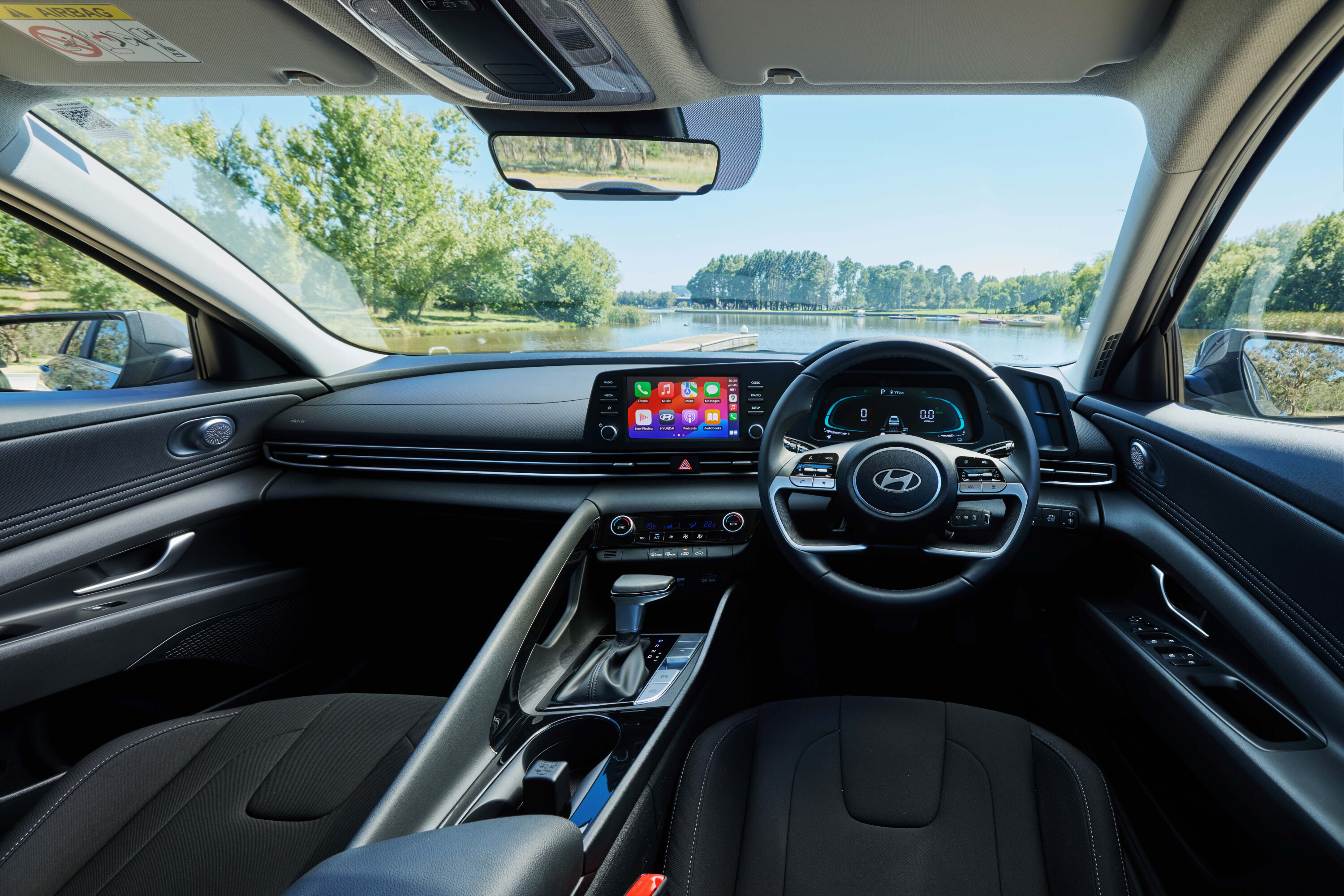
Safety-wise, the i30 sedan hybrid scores six airbags
This includes satin-chrome 16-inch alloys, front and rear parking sensors, adaptive cruise control with stop-and-go function, LED headlights with auto high-beam, heated mirrors, an 8.0-inch multimedia touchscreen with wireless Apple CarPlay/Android Auto, a new 4.2-inch digital instrument cluster, a redesigned wireless charging pad to accommodate larger phones, new USB-C outlets (one front, two rear), leather steering wheel and gear selector trim, premium cloth seat upholstery, rear-seat air vents and a rear centre armrest.
Safety-wise, the i30 sedan hybrid scores six airbags, driver attention warning with leading vehicle departure alert, forward auto emergency braking with pedestrian/cyclist detection and junction turning alert, intelligent speed limit assist, lane following assist, lane-keep assist, and rear occupant alert.
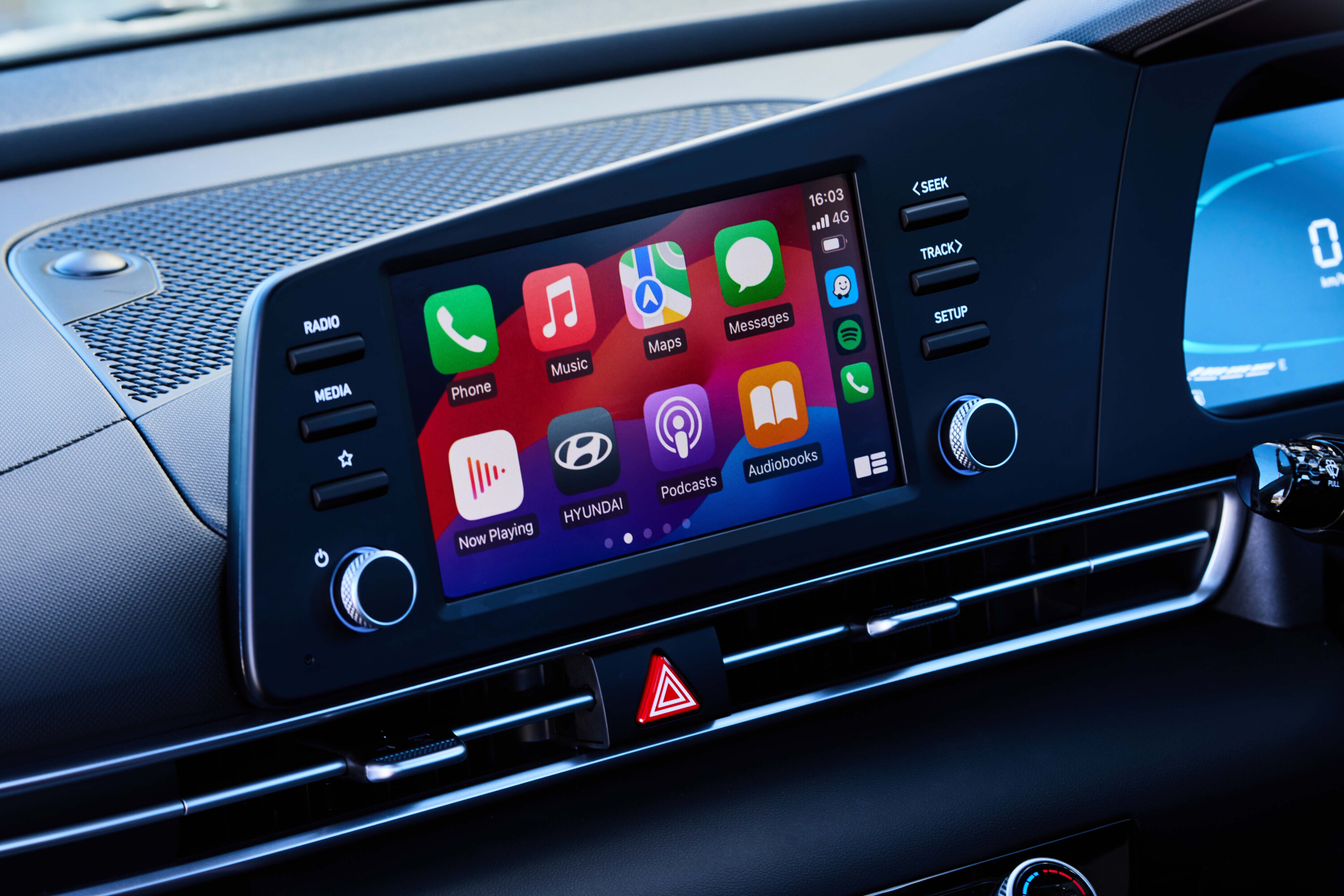
Interior comfort, space and storage
With so much length and a generous 2720mm wheelbase, the i30 sedan offers levels of space and comfort you’d expect from the next segment up.
Plus, all the main touchpoints, including the stylish cloth seats, the nice-to-hold leather wheel and general driver ergonomics are bang on – even though the base hybrid only gets manual seat adjustment (including for height).
The functionality of all the switchgear is simple and consistent in its quality, and while the basic new digital instruments are hardly the last word in sophistication, they convey information fairly well.
Having wireless smartphone connectivity is also a big plus, though the six-speaker stereo is merely adequate in its strength and bass delivery, and it lacks the clarity of the eight-speaker Bose system in more expensive models. It also doesn’t offer DAB+ digital radio.
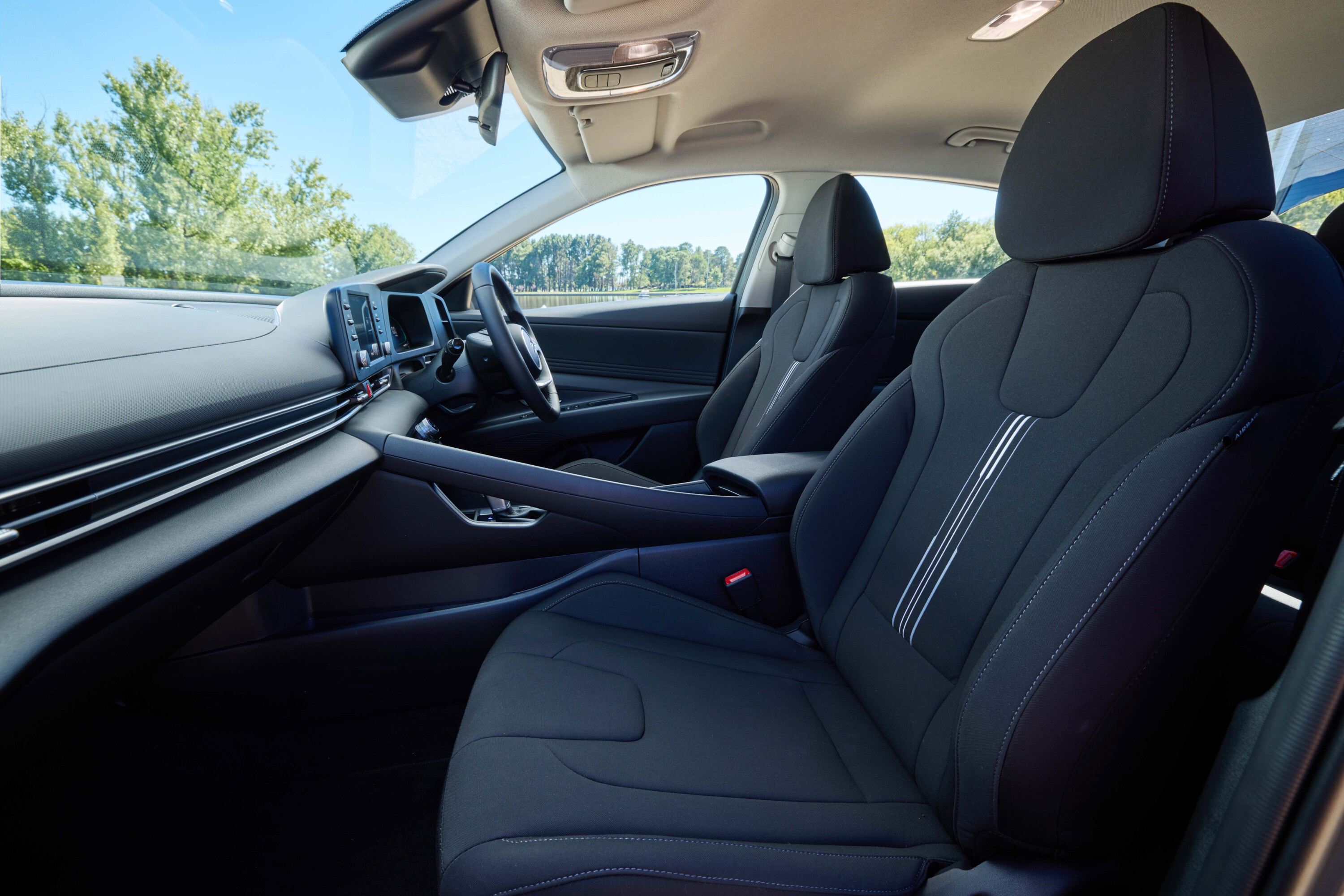
Seat comfort in the front buckets is arguably better than the rear, though the back seat is acceptably supportive, with good vision and plenty of legroom – more so than headroom (or toe room if the driver’s seat is cranked low).
Where the i30 sedan falls down somewhat is in its materials tactility – everything is hard plastic, if solidly put together – as well as overall storage. The cup holders and centre console are generally fine, despite the front passenger’s design-led ‘Jesus handle’ on the console edge being a little intrusive.
It’s the door storage that’s below par, with awkwardly angled 600ml bottle holders in the front doors and stuff-all in the rear doors.

While everything feels robust, the funky cloth seat trim with cool centre striping isn’t enough to distract from the cabin’s general air of austerity.
The base i30 sedan is definitely fit for purpose, but anyone with an ounce of aesthetic flair should be looking further up the range – in particular, the classy N-Line (which isn’t available with the hybrid powertrain in Australia, unfortunately).
The i30 sedan’s huge 474-litre boot continues the theme. There’s a tonne of space and 60:40 folding backrests that flop onto the rear cushion (meaning a non-flat floor), but the trimming is sparse, the boot lid has nothing to grab onto when you’re closing it, and it doesn’t even have an outside release! Only the interior one next to the driver’s seat, or the keyfob.
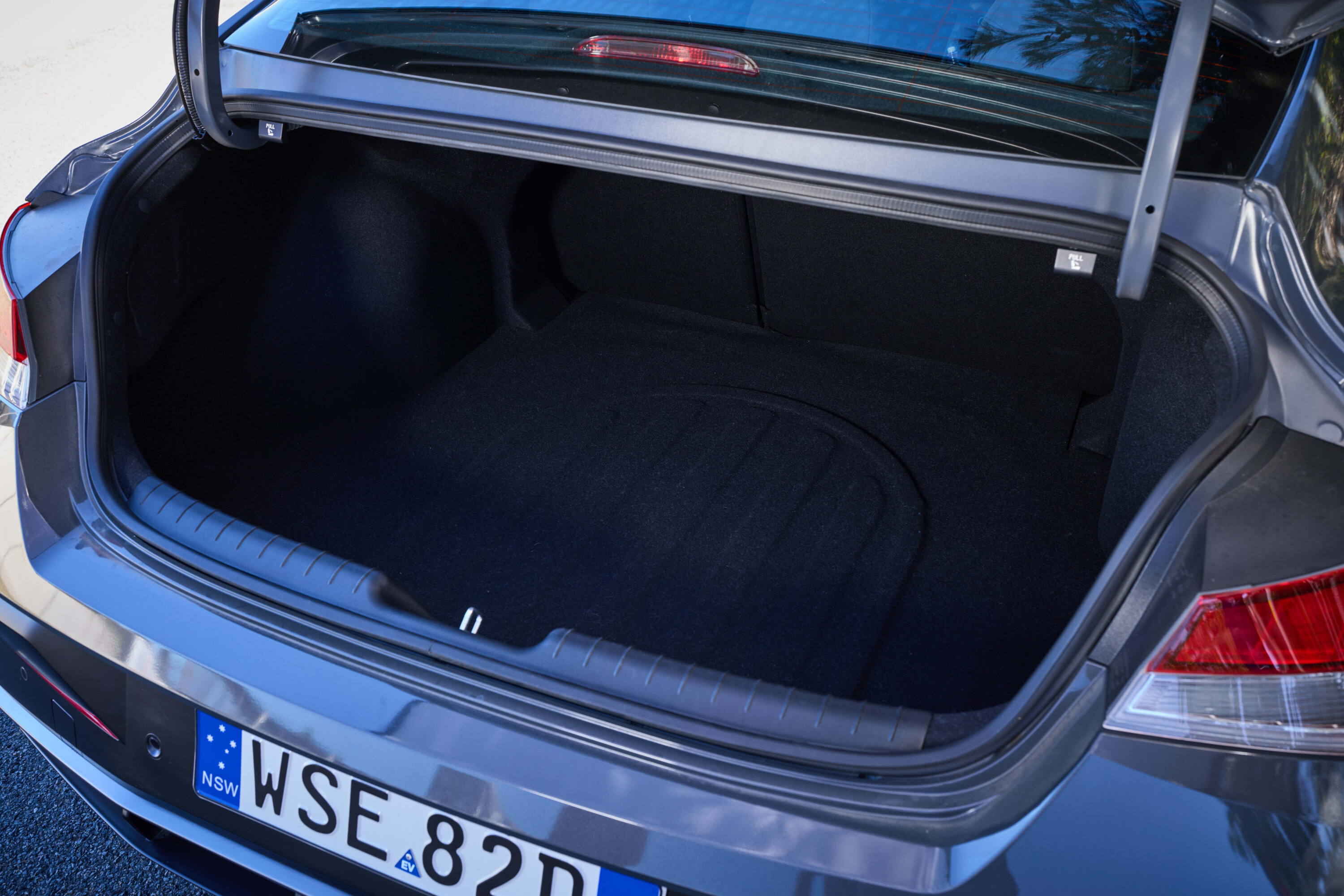
What is it like to drive?
If you can look past the base i30’s lack of visual razzle-dazzle, then you’ll be rewarded with by far its finest attribute – the way it drives.
While the new 2.0-litre petrol with ‘intelligent’ CVT is a far better performer on the road than it appears to be on paper, it can’t match the hybrid’s effortlessly torquey demeanour or its outstanding fuel efficiency.
The ADR81/02 official combined fuel consumption figure for the sedan hybrid is just 3.9L/100km (compared to 6.1L/100km for the 2.0-litre), which is exceptional for a vehicle this big. And on the road, despite being pushed hard through some Victorian high country, we averaged a superb 5.1L/100km over almost 200km of testing.
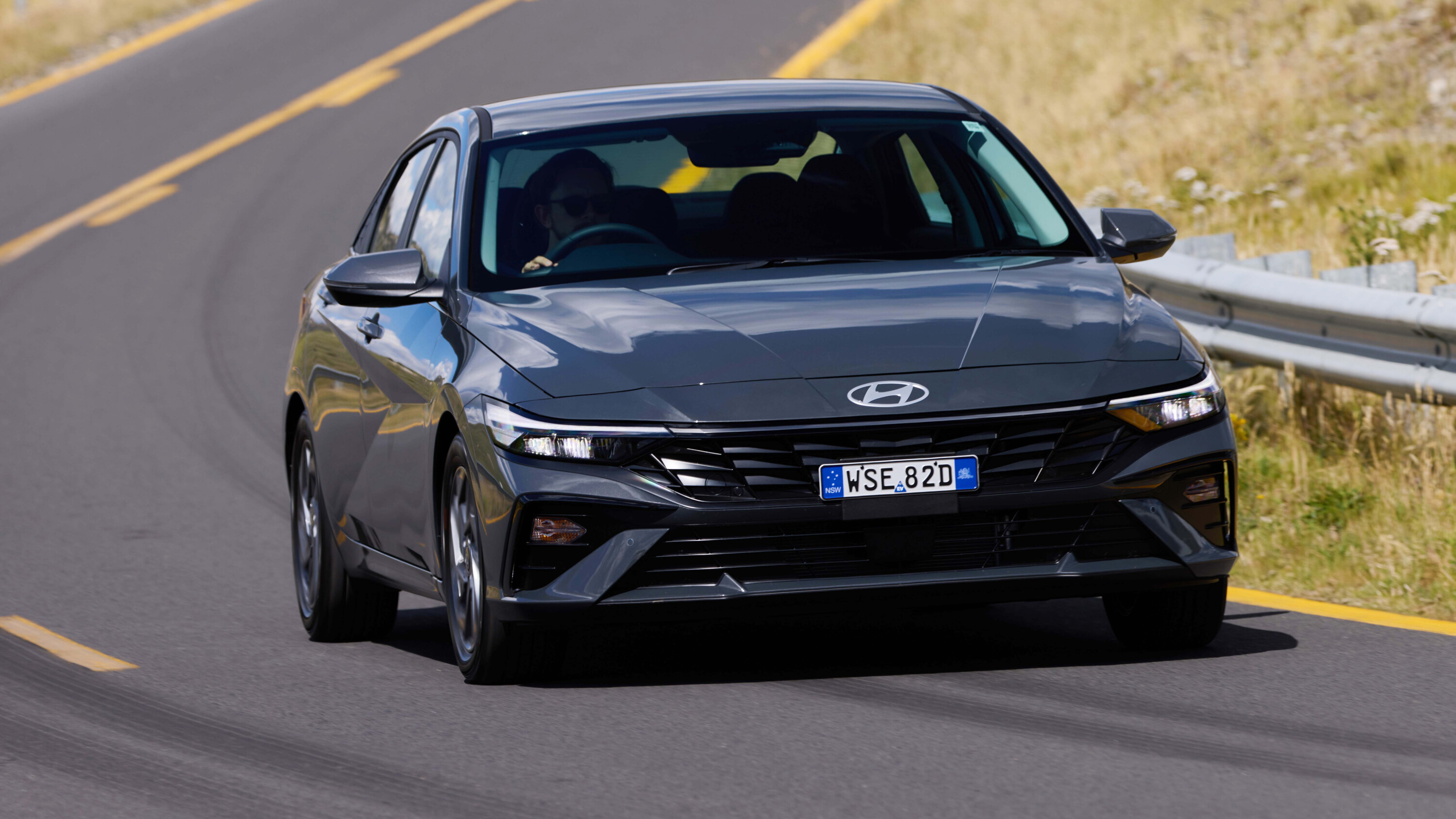
If ever there was a car that drives the opposite of the way it looks, this is it!
That included plenty of hills and corners, where the i30 sedan hybrid demonstrated the benefits of both its torquey drivetrain (with 265Nm), its slick six-speed dual-clutch automatic transmission, and its sophisticated multi-link rear suspension. If ever there was a car that drives the opposite of the way it looks, this is it!
Crisp electric steering (with just 2.5 turns lock-to-lock) combines with excellent chassis poise and really strong handling ability to make the i30 sedan hybrid feel rather like a base model Golf in its smooth and polished dynamic flavour.
And while the sedan hybrid’s ride isn’t plush, its well-controlled discipline and ability to devour Australian country roads with aplomb will be appreciated by everyone who rides in it.
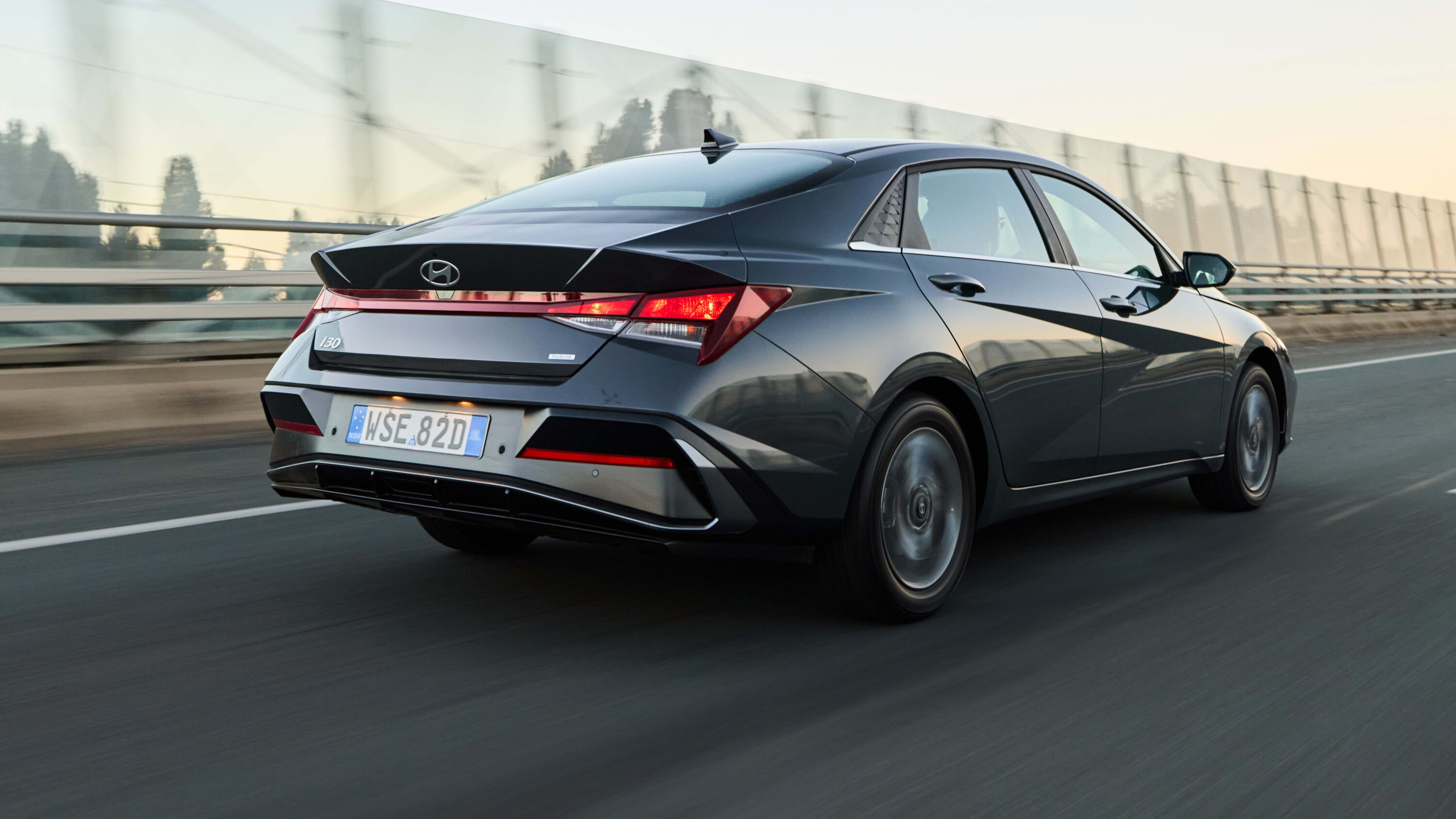
As will the ease and effortlessness of its 1.6-litre direct-injection petrol-hybrid drivetrain.
There’s no turbo here, but the small engine (with rather feeble 77kW/147Nm outputs) teams brilliantly with a 32kW/170Nm electric motor to deliver a driving experience far beyond what you may expect … even though its foot-flat performance (10.5sec to 100km/h) and high-rev refinement are nothing to write home about.
With this car, it’s the impressive all-round driveability – combined with superb fuel efficiency – that counts.

VERDICT
The beauty of the broad i30 sedan range in Australia is that there’s something for everyone – both performance-wise and appearance-wise.
In its base form, as tested here with the new hybrid drivetrain, it’s a car for pragmatists. It reminds me of older German cars that were all about the engineering rather than the equipment tinsel … even though the base hybrid ticks pretty much all the boxes when it comes to stuff you need.

Roomy and rewarding to drive, there’s so much to recommend with the i30 sedan hybrid.
And if you want more than just a meat-and-three-veg appearance, there’s always the Elite and Premium versions that will arrive in the coming months featuring classier wheels, leather interiors and the up-spec cabin screens that make the sedan’s interior feel less like an Uber ride.
That said, this would be a brilliant ride-share vehicle! Quiet, comfortable, effortless, efficient, safe – lack of ANCAP rating notwithstanding – roomy and rewarding to drive, there’s so much to recommend with the i30 sedan hybrid.
This Korean four-door is the polar opposite of its Chinese contemporaries in that it’s not about how it looks – it’s what’s underneath that counts.
| 2024 Hyundai i30 sedan hybrid specifications | |
|---|---|
| Price | $33,000 (before on-road costs) |
| DRIVETRAIN | |
| Engine | 1580cc 4cyl, DOHC, 16v, direct injection |
| Electric motor | Permanent magnet synchronous |
| Battery | 1.32kWh lithium-ion polymer |
| Compression ratio | 13.0:1 |
| Drive | Front-wheel drive |
| System power | 104kW |
| System torque | 265Nm |
| Transmission | 6-speed dual-clutch |
| CHASSIS | |
| L/W/H | 4710/1825/1420mm |
| Wheelbase | 2720mm |
| Track (f/r) | (f/r) 1585/1599mm |
| Weight | 1360kg |
| Boot | 474 litres |
| Fuel/Tank | 91 RON/42 litres |
| Economy | 3.9L/100km (combined) |
| Suspension | Front: struts, A-arms, anti-roll bar |
| Rear: multi-links, coil springs, anti-roll bar | |
| Steering | Electric power-assisted, 2.5 turns lock-to-lock |
| Front brakes | Ventilated disc (280mm) |
| Reat brakes | Solid disc (262mm) |
| Tyres | Kumho Ecowing ES31 |
| Tyre size | 205/55R16 91H |
| SAFETY | |
| ANCAP rating | Unrated |
| 0-100km/h | 10.5sec (claimed) |
Score breakdown
Things we like
- Impressive dynamics
- Torquey and efficient hybrid drivetrain
- Generous space
- Strong value
Not so much
- Dowdy styling of base model
- Inadequate door storage
- Austere cabin appearance and feel
- Sparsely trimmed boot
We recommend
-
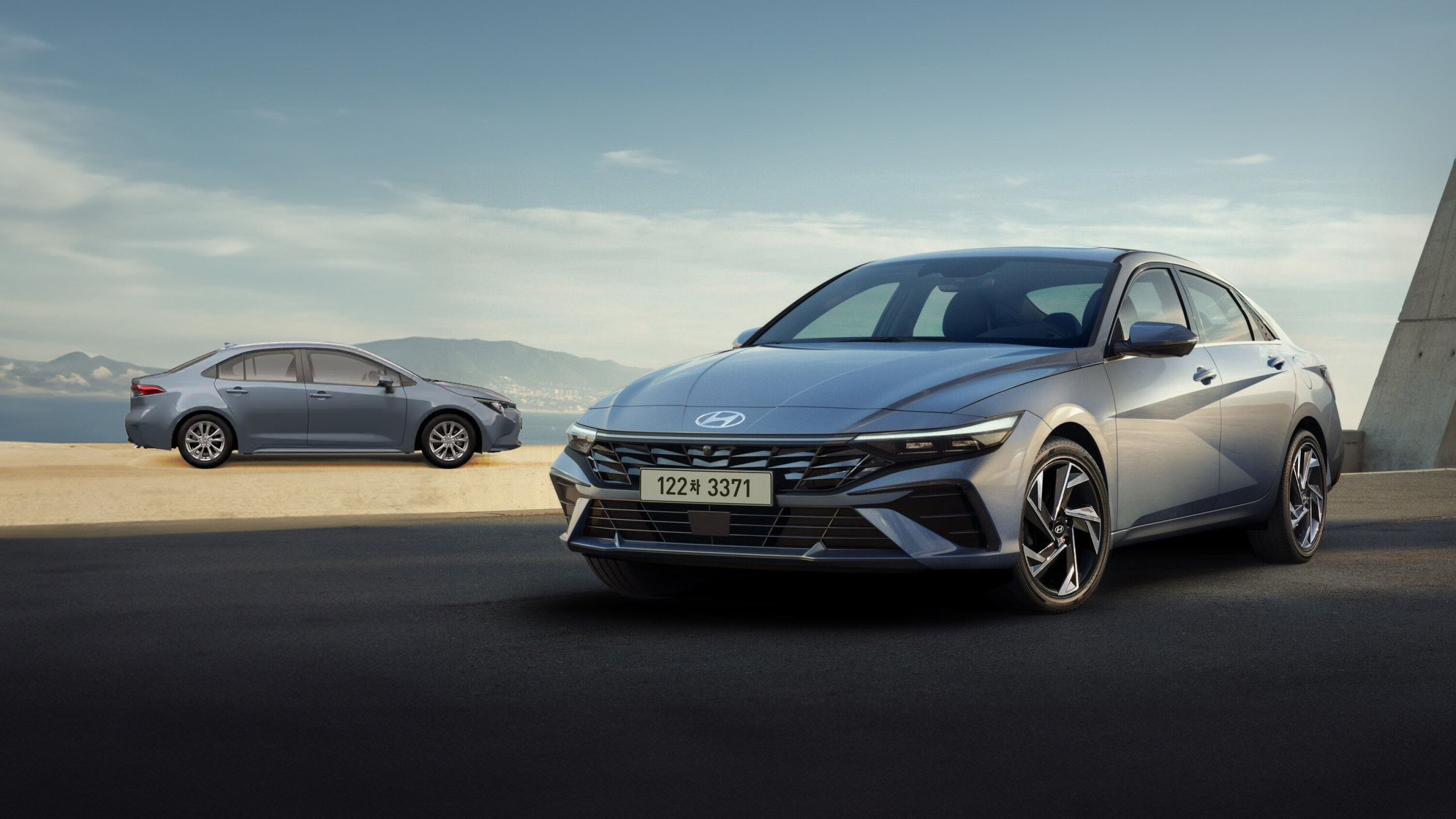 News
News2024 i30 Sedan Hybrid gets drive-away pricing, Hyundai calls out Corolla
Hyundai is going hard with its new petrol-electric sedan, with sharp drive-away pricing and a reminder that it's got 600 cars just days and weeks away
-
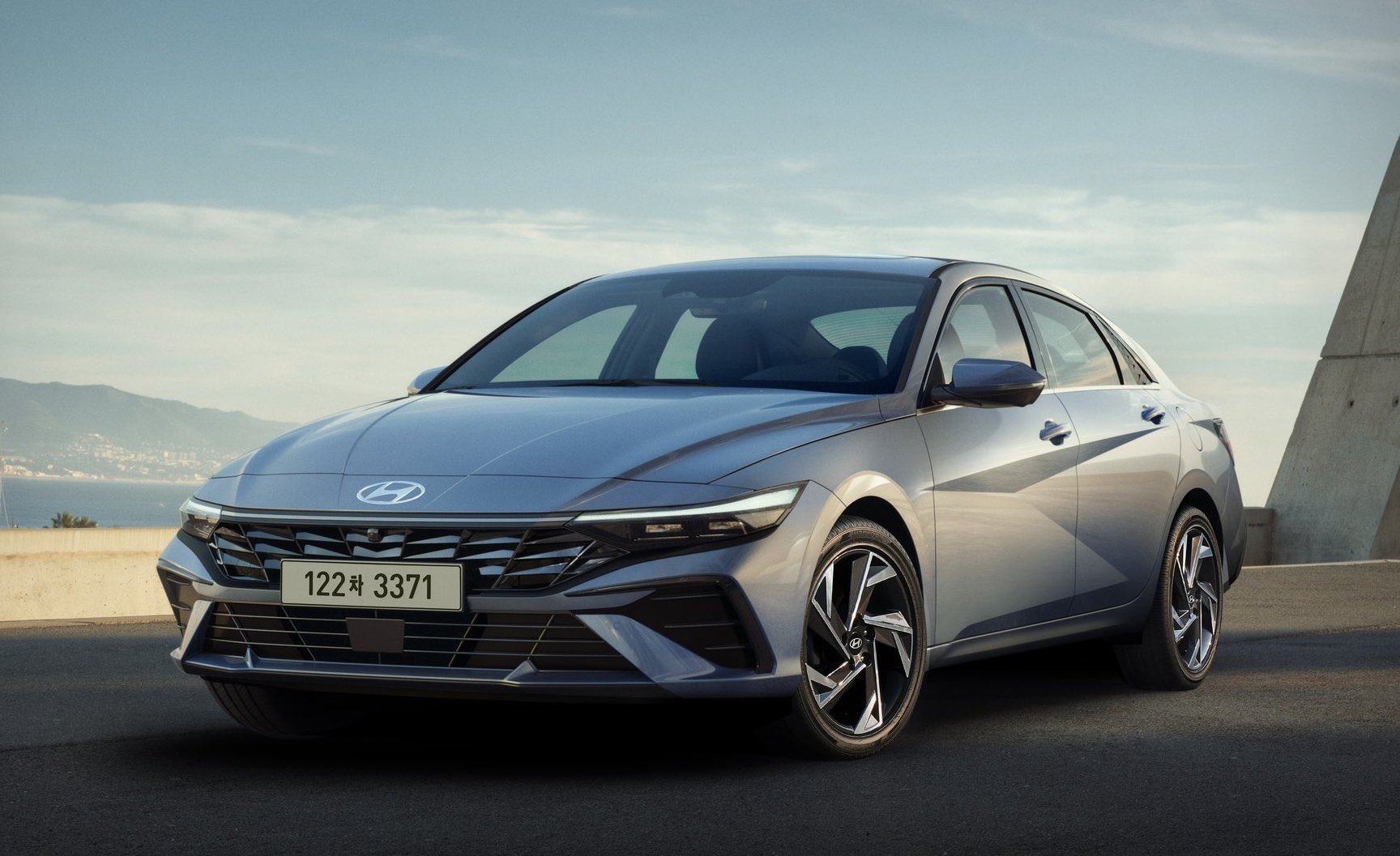 News
News2024 Hyundai i30 Sedan Hybrid: Corolla rival confirmed for Australia
Hyundai Australia has confirmed its Toyota Corolla Hybrid sedan rival will arrive later this year
-
 News
News2025 New Car Calendar: All the new cars coming to Australia
Take a look at our list of what is expected to launch in Australia in 2025 – plus those we might not see locally just yet

